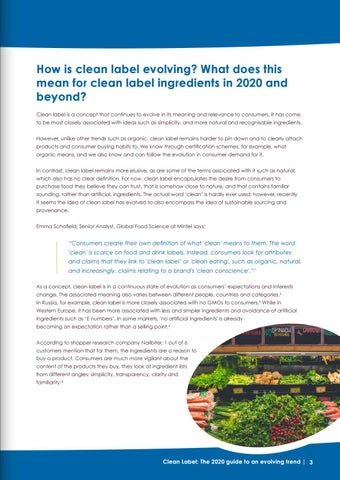How is clean label evolving? What does this mean for clean label ingredients in 2020 and beyond? Clean label is a concept that continues to evolve in its meaning and relevance to consumers. It has come to be most closely associated with ideas such as simplicity, and more natural and recognisable ingredients. However, unlike other trends such as organic, clean label remains harder to pin down and to clearly attach products and consumer buying habits to. We know through certification schemes, for example, what organic means, and we also know and can follow the evolution in consumer demand for it. In contrast, clean label remains more elusive, as are some of the terms associated with it such as natural; which also has no clear definition. For now, clean label encapsulates the desire from consumers to purchase food they believe they can trust, that is somehow close to nature, and that contains familiar sounding, rather than artificial, ingredients. The actual word ‘clean’ is hardly ever used; however, recently it seems the idea of clean label has evolved to also encompass the idea of sustainable sourcing and provenance. Emma Schofield, Senior Analyst, Global Food Science at Mintel says:
“Consumers create their own definition of what 'clean' means to them. The word 'clean' is scarce on food and drink labels. Instead, consumers look for attributes and claims that they link to 'clean label’ or 'clean eating', such as organic, natural, and increasingly, claims relating to a brand's 'clean conscience'.”1 As a concept, clean label is in a continuous state of evolution as consumers’ expectations and interests change. The associated meaning also varies between different people, countries and categories.2 In Russia, for example, clean label is more closely associated with no GMOs to consumers.3 While in Western Europe, it has been more associated with less and simpler ingredients and avoidance of artificial ingredients such as ‘E numbers’. In some markets, 'no artificial ingredients' is already becoming an expectation rather than a selling point.4 According to shopper research company Nailbiter, 1 out of 6 customers mention that for them, the ingredients are a reason to buy a product. Consumers are much more vigilant about the content of the products they buy, they look at ingredient lists from different angles: simplicity, transparency, clarity and familiarity.5
Clean Label: The 2020 guide to an evolving trend | 3





